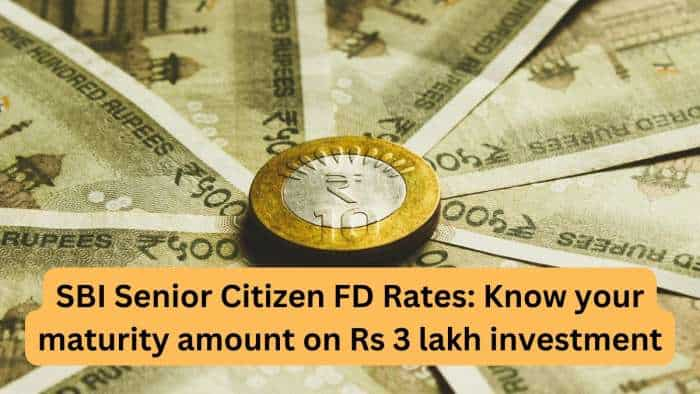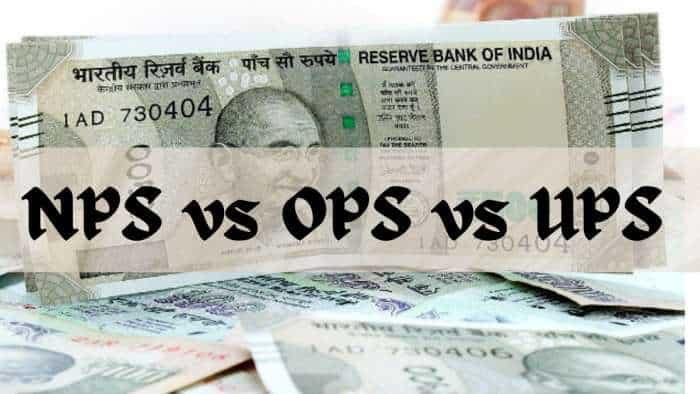Employee Provident Fund vs Public Provident Fund: EPF or PPF - where can investors earn higher interest rate?
EPF vs PPF comparison: EPFO invests 15% of the fresh money collected every year in equities. This exposure to equity makes it vulnerable to market movements.
)
Employee Provident Fund (EPF) and Public Provident Fund (PPF) are major government-backed retirement plans which vary in terms of interest rates, taxation, and terms of withdrawal. Broadly speaking, EPF is an excellent retirement plan for those who are salaried, while PPF works well for those who are self-employed. Investors must pay attention to withdrawal rules and the taxation terms of EPF and PPF, while choosing where and how much to invest. In this srticle we'll discuss the primary difference between the two retirement schemes to understand which is more lucrative for investors.
EPF vs PPF comparison: Purpose and coverage
EPF: EPF is a mandatory retirement savings scheme for salaried employees. Both the employee and employer contribute a portion of the employee's salary to the EPF account. This corpus serves as a long-term savings option for retirement.
PPF: Whereas PPF is a voluntary long-term investment scheme. It is not tied to employment and can be accessed by both salaried and self-employed individuals. PPF is primarily designed to encourage regular savings. And it provides a tax-efficient way to accumulate wealth over time.
EPF vs PPF comparison: Investment Options
EPF: EPFO invests 15% of the fresh money collected every year in equities. This exposure to equity makes it vulnerable to market movements. The rest 85% is invested in debt instruments such as government securities and bonds. The investments are managed by the EPFO. And the focus is on safety and stability, but the returns may not be as high as other market-linked options.
PPF: Whereas PPF investments are also debt-oriented and are invested in government securities, which are considered safe. PPF offers a fixed interest rate, which is set by the government quarterly and may be subject to fluctuations.
The present EPF interest rate is 8.15%, while the current PPF rate is 7.1%.
EPF vs PPF comparison: Contribution Limits
EPF: In EPF, in most of the cases both the employer and the employee contribute 12% of the employee's basic salary plus dearness allowance (DA).
PPF: On the other hand, PPF is a self-contributory scheme, where the individual makes voluntary contributions. The minimum annual contribution is Rs. 500, and the maximum is Rs. 1.5 lakh per financial year.
EPF vs PPF comparison: Tax benefits
EPF: EPF contributions by the employee are eligible for tax deduction under Section 80C of the Income Tax Act, subject to the overall limit of Rs. 1.5 lakh per year. The interest earned and the maturity amount are tax-exempt under specific conditions.
PPF: While PPF contributions are also eligible for tax deduction under Section 80C, up to Rs. 1.5 lakh per financial year. The interest earned and the maturity amount are fully tax-exempt.
EPF vs PPF comparison: Withdrawal flexibility
EPF: EPF has strict withdrawal rules, and premature withdrawals are generally not allowed except for specific circumstances like house construction, higher education, marriage, unemployment, or medical emergencies.
PPF: On the other hand, PPF has a lock-in period of 15 years. Partial withdrawals are allowed after the expiry of 6 years and the start of the 5th year from the date of opening the account, subject to certain conditions.
EPF vs PPF comparison: Account tenure
EPF: The EPF account remains active as long as the individual is employed. It can be transferred from one employer to another if the person changes jobs.
PPF: While the PPF account has a maturity period of 15 years. After maturity, the account can be extended in blocks of 5 years indefinitely.
So, the choice between EPF and PPF depends on a person's employment status, risk tolerance, and financial goals. A salaried employee will have access to EPF through their employer, which will offer them the advantage of employer contributions. Whereas, PPF is open to everyone and offers more flexibility in terms of contribution amounts and account tenure. Both EPF and PPF provide tax benefits and are considered safe investment options. However, it is recommended to consider specific financial needs and consult with a financial advisor to determine the most suitable option.
Get Latest Business News, Stock Market Updates and Videos; Check your tax outgo through Income Tax Calculator and save money through our Personal Finance coverage. Check Business Breaking News Live on Zee Business Twitter and Facebook. Subscribe on YouTube.
RECOMMENDED STORIES

Top 5 ETFs That Have Given Highest Returns in 1 Year: Rs 1,00,000 one-time investment in No. 1 ETF has grown to Rs 1,77,286

Retirement Planning: How one-time investment of Rs 11,00,000 can create a Rs 3,30,00,000 retirement corpus

Income Tax Calculations: Is your annual salary Rs 6.75 lakh, Rs 9.25 lakh, Rs 14.50 lakh, or Rs 18.50 lakh? Know how much tax you will pay in old and new tax regimes

Monthly Pension Calculations: Is your basic pension Rs 25,000, Rs 45,000, or Rs 55,000? Know what can be your total pension as per latest DR rates

SBI Senior Citizen FD Rates: Want to invest Rs 3,00,000 in SBI FD? You can get this much maturity amount in 1 year, 3 years, and 5 years

SBI 5-Year FD vs SCSS: Which investment option can offer better returns with quarterly payments on Rs 6,00,000?
09:38 PM IST









 EPFO rolls out centralised pension system in all regional offices; 68 lakh pensioners to benefit
EPFO rolls out centralised pension system in all regional offices; 68 lakh pensioners to benefit EPFO extends deadline for employers to upload pending pension applications until January 31, 2025
EPFO extends deadline for employers to upload pending pension applications until January 31, 2025 Does an employer stop EPF contributions if the employee becomes a senior citizen?
Does an employer stop EPF contributions if the employee becomes a senior citizen? Employees Provident Fund: All you need to know about login, EPF balance, interest rate and other details
Employees Provident Fund: All you need to know about login, EPF balance, interest rate and other details EPFO: PF amount displayed in salary slip didn't reach your PF account; here’s what you can do
EPFO: PF amount displayed in salary slip didn't reach your PF account; here’s what you can do